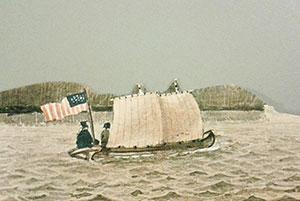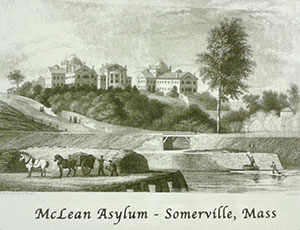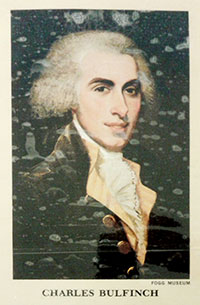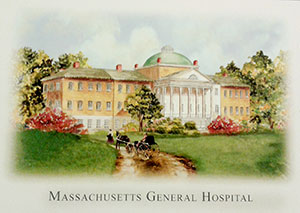 Eagle Feathers #93 – The View from Cobble Hill
Eagle Feathers #93 – The View from Cobble Hill
By Bob (Monty) Doherty
When the Puritans first purchased the land now known as the Inner Belt Industrial Area, it was a peninsula. It was an elevated area surrounded on three sides by a river and a tidal marsh. Today, the river, the marsh, and the historic high ground are gone.
Through the years, names changed. The river was first known as the Gibones River, followed by Willis Creek, and later, the Millers River, named after local landowners. The name of the hill has been called Cobble, Miller, Asylum, Pleasant, and back to Cobble.

As years went by, its historic terrain evolved. If you were looking down from its crest on April 18, 1775, you would have seen Paul Revere narrowly escaping capture from the King’s cavalry. The next day’s observation would have been British soldiers retreating across its base during their flight from Concord and Lexington. One month later, on June 17, Minutemen organized and marched along its border, to and from the Battle of Bunker Hill.
During the first year of the Revolutionary War, this site became an American fortress, built by Generals’ Henry Knox and Israel Putnam. It provided protection of the Charles River and the bombardment of Boston. It kept the British at bay until they withdrew to Canada.

After the revolution, wealthy Boston merchant, ship owner, and former “Sons of Liberty” member Joseph Barrell purchased over two hundred acres on and around the elevation. Sparing no expense, he then hired America’s first-born architect, Charles Bulfinch, to design what was christened Pleasant Hill at that time. The estate adjoined the Millers River near its mouth, where it flowed into the Charles River.
With its surrounding grounds, the structure became the most beautiful mansion in New England. Celebrities of the era crossed the rivers back and forth from Boston on handsome, flat-bottomed boats called “Cobbles.” These flat-floored boats were originally used for fishing. There were no viable bridges at that time, and the distance to Boston from Pleasant Hill was ten miles. Thus, crossing the river’s mile-wide distance using cobbles was practical.

Joseph Barrell died in 1804. His relatives later sold his estate to Massachusetts General Hospital, founded in 1811. The War of 1812 delayed the beginning of its construction until 1816. The hospital was developed in two wings: One psychiatric and the other general medicine. The first wing to open was Cobble Hill’s McLean Asylum in 1818. This was the redeveloped Barrell Mansion in what is now Somerville.

Mary Tyler of Mary Had a Little Lamb fame worked as a matron there for years along with her husband, who was its superintendent. The second wing, also designed by Charles Bulfinch, was the general medicine section built in1821. This was located directly across the Charles River in Boston and is the existing M.G.H. “Cobbles” were frequently used to transport doctors and patients between the two related hospitals. These seeds that began in Somerville grew into the famous Massachusetts General Hospital.
Cobble Hill and the Millers River may be gone, but the legacy of M.G.H. – sometimes affectionately called Mankind’s Greatest Hospital – goes on!













Reader Comments